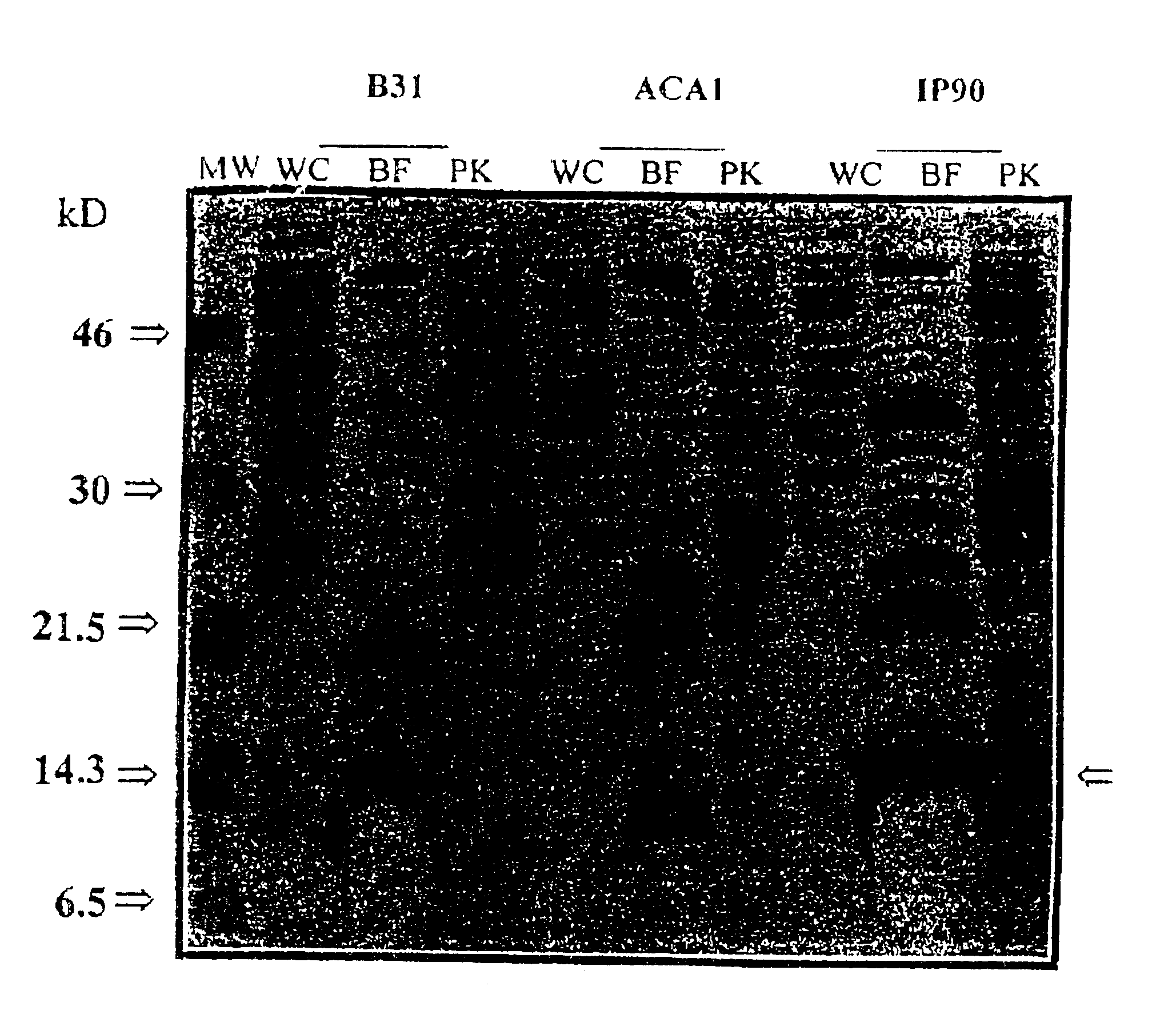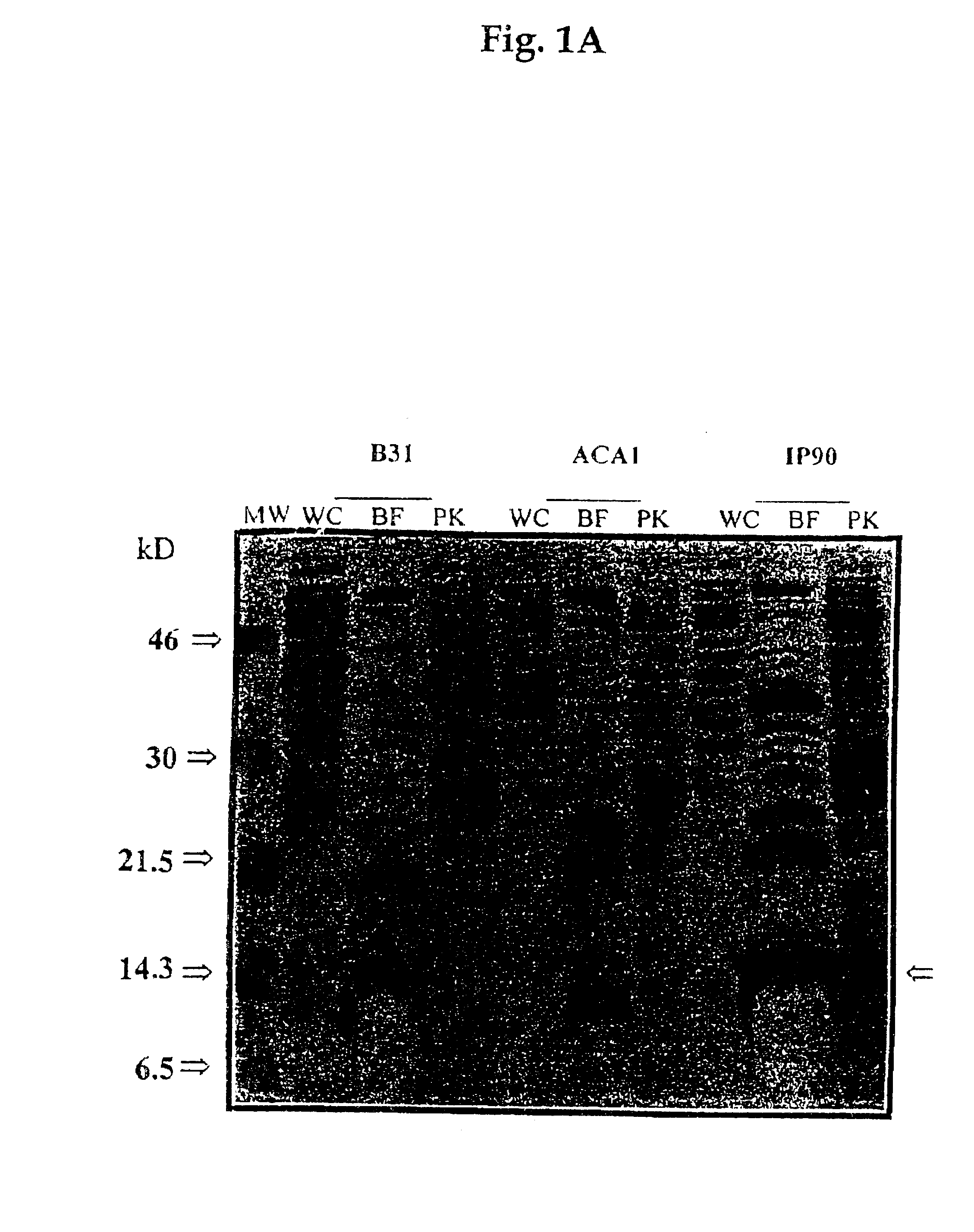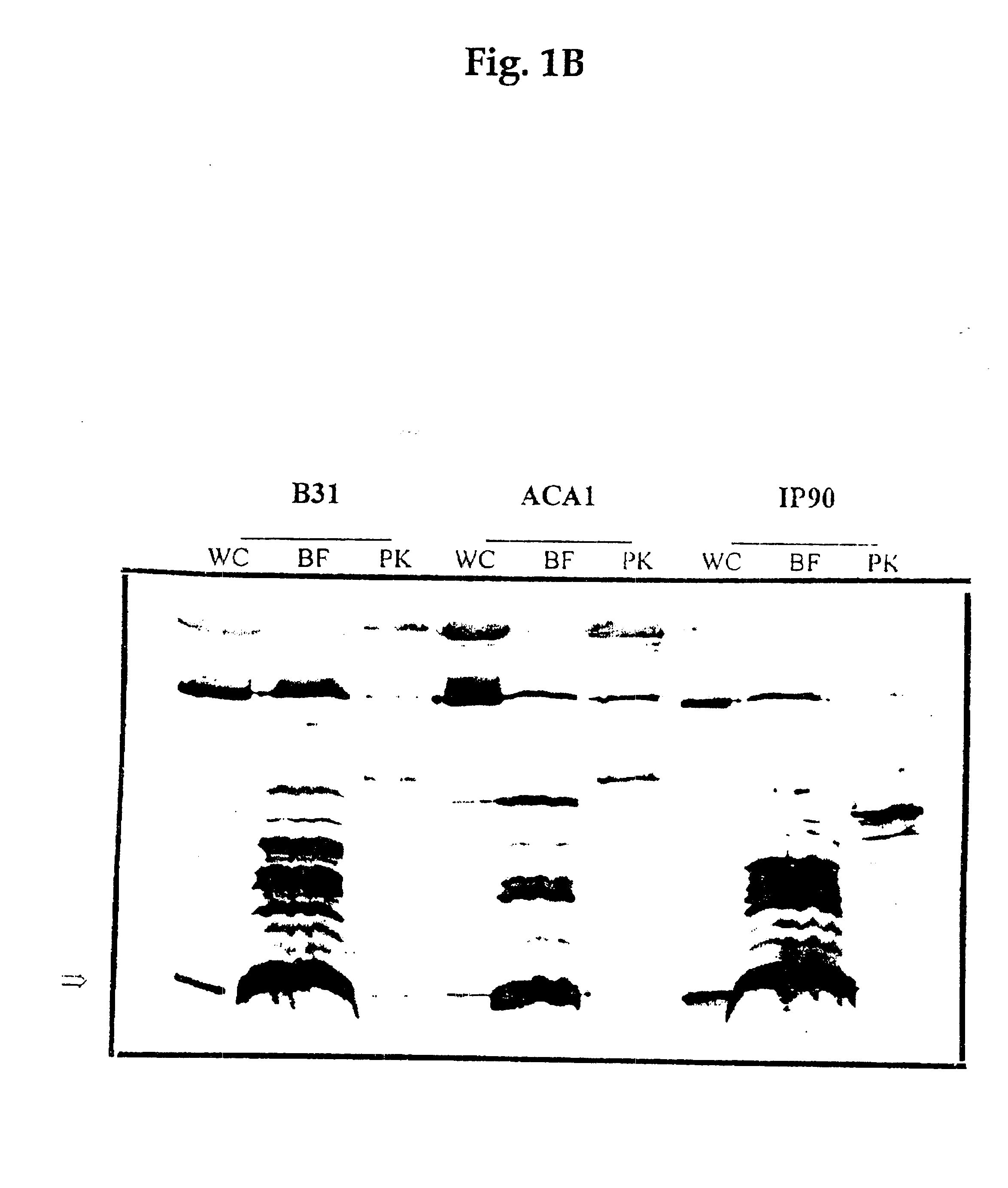P13 antigens from Borrelia
- Summary
- Abstract
- Description
- Claims
- Application Information
AI Technical Summary
Benefits of technology
Problems solved by technology
Method used
Image
Examples
example 1
Preparation of Bb Proteins, Sodium Dodecyl Sulphate-polyacrylamide Gel Electrophoresis (SDS-PAGE), and Western Blot
1.1 Preparation of Bb Proteins
For the whole-cell protein preparations, bacteria harvested from 250 ml of BSK II medium were washed twice with phosphate-buffered saline-5mM MgCl.sub.2 (PBS-Mg). The pellet was suspended in 2 ml of PBS, sonicated and the supernatant was collected after centrifugation at 10,000 rpm for 30 min.
The subcellular fraction of borreliae outer membrane components (designated Fraction B) was prepared as described elsewhere (WO 90 / 04411). Briefly, cells harvested from 1.51 of the culture were washed three times with 10 mM Tris-HCl (pH 7.4), 150 mM NaCl and 5 mM MgCl.sub.2 (TSM buffer). Octyl-.beta.-D-glucopyranoside (OGP) (Sigma St. Louis, Mo.) was added to a final concentration of 2% in 10 ml TSM buffer and the suspension was incubated at 37.degree. C. for 60 min. The cell lysate was centrifuged and the supernatant was incubated at 56.degree. C. for...
example 2
Preparation of Antiserum against the 13 kDa Antigen
2.1 Purification of the 13 kDa Antigen
A 13 kDa protein was purified by 15% SDS-PAGE of Fraction B obtained from the B. burgdorferi B313 spirochaetes. The appropriate band was visualised by staining the gel with 250 mM KCl in ice-cold water without fixation in MeOH and acetic acid. Elution of 30 protein from the gel was performed in a Schleicher and Schuell Biotrap in 15 mM NH.sub.4 HCO.sub.3 (200V for 8 hr).
2.2 Immunisation of Rabbits
A mixture of eluted protein and protein from a crushed SDS-PAGE gel of approximately 100 .mu.g of the 13 kDa protein prepared as described above was homogenised and used in each of four immunisations of one rabbit performed at one and two (for the last immunisation) months intervals. Serum samples were obtained during a 5-month period, and serum was diluted 1:1,000 when used for Western blot analysis.
example 3
Cell Surface Proteolysis of Borrelia Cells
3.1 Protease Treatment of Borrelia Cells
Cell surface proteolysis of Bb cells was conducted as previously described (Barbour et al., 1984). Briefly, washed spirochetes were resuspended in PBS-Mg at a concentration of 2.times.10.sup.9 cells / ml. To 950 .mu.l of the cell suspension was added 50 .mu.l of one of the following: distilled water, proteinase K (Sigma, St Louis, Mo.) (4 mg / ml in water) or trypsin (Gibco BRL, Gaithersburg, Md.) (1 mg / ml in 10.sup.-3 M HCl). After incubation for 40 min at 20.degree. C., the proteolytic treatment was stopped by the addition of 10 .mu.l from a solution of the peptidase inhibitor phenylmethylsulfonyl fluoride (PMSF) (Sigma, St. Louis, Mo.) (50 mg of PMSF per 1 ml of isopropanol), and the cells were centrifuged and washed twice with PBS-Mg. The pellets were resuspended in TSM buffer. One-third of the cell suspension of each preparation was subjected to the whole cell protein extraction by boiling in SDS-PAGE...
PUM
| Property | Measurement | Unit |
|---|---|---|
| Fraction | aaaaa | aaaaa |
| Fraction | aaaaa | aaaaa |
| Fraction | aaaaa | aaaaa |
Abstract
Description
Claims
Application Information
 Login to View More
Login to View More - R&D
- Intellectual Property
- Life Sciences
- Materials
- Tech Scout
- Unparalleled Data Quality
- Higher Quality Content
- 60% Fewer Hallucinations
Browse by: Latest US Patents, China's latest patents, Technical Efficacy Thesaurus, Application Domain, Technology Topic, Popular Technical Reports.
© 2025 PatSnap. All rights reserved.Legal|Privacy policy|Modern Slavery Act Transparency Statement|Sitemap|About US| Contact US: help@patsnap.com



